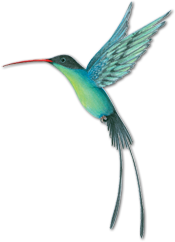COPYRIGHT : SOFTWARE : CONTRACT TERMS : OWNERSHIP OF COMPUTER PROGRAMS DEVELOPED UNDER RESEARCH AGREEMENT : DRUGS : ALGORITHMS : DATABASES : METABOLISATION : DEVELOPMENT COSTS : INTELLECTUAL PROPERTY RIGHTS : AGENTS : JAVA : GRAPHICAL USER INTERFACE : GUI : RESEARCH AGREEMENT : SPONSORS
The judge was right to hold that the defendant university owned the copyright in software developed with the claimant under a research agreement by virtue of an agreement between the parties independent of the research agreement.
The claimant (C) appealed against a decision that the defendant (the university) owned the copyright in computer programs arising out of research carried out at the university by one of C’s employees (E). The university developed a computer-based aid to assist research and development in the pharmaceutical industry by seeking to predict how a potential new drug would be absorbed, distributed and eliminated by the body. The university had created a version in the form of MathCAD worksheets and wanted to develop the worksheets into a software product suitable for general commercial use by third parties. Finance to develop the product was provided by sponsors through a multiparty research agreement. C was one of the sponsors. The programme of work and intellectual property rights in respect of the work done under it were provided and defined under the agreement. E began work in 2000 and produced a first full version of the program in March 2001. By then the relationship between C and the university was breaking down. C started proceedings claiming a declaration that it was the owner of the copyright in the programs developed by E. The judge held that the university was the copyright owner. He reached that conclusion as a matter of construction of para 9 of the research agreement dealing with intellectual property rights. C appealed arguing that para 9 was a self-contained code under which existing rights were unaffected, rights in work done by sponsors belonged to the sponsor and rights in work done by the university belonged to the university. On that basis C was the copyright owner of the work done by E.
By respondent’s notice the university argued that there existed between the parties an agreement applicable to the intellectual property rights separate from the research agreement under which E although an employee of C was commissioned to carry out the work for the university and did so as an agent for the university.
HELD: The argument advanced under the respondent’s notice was correct. The research agreement contemplated and indeed required that the university should recruit a programmer to produce the software. It did not contain or purport to govern the terms by which that was to be done. There was a separate agreement between the university and C relating to the provision of E’s services as direction from the university’s original conception.
Appeal dismissed.
CYPROTEX DISCOVERY LTD V UNIVERSITY OF SHEFFIELD (2004)
CA (Civ Div) (Ward LJ, Potter LJ, Clarke LJ) 1/4/2004
“Lawtel” 5th April 2004



